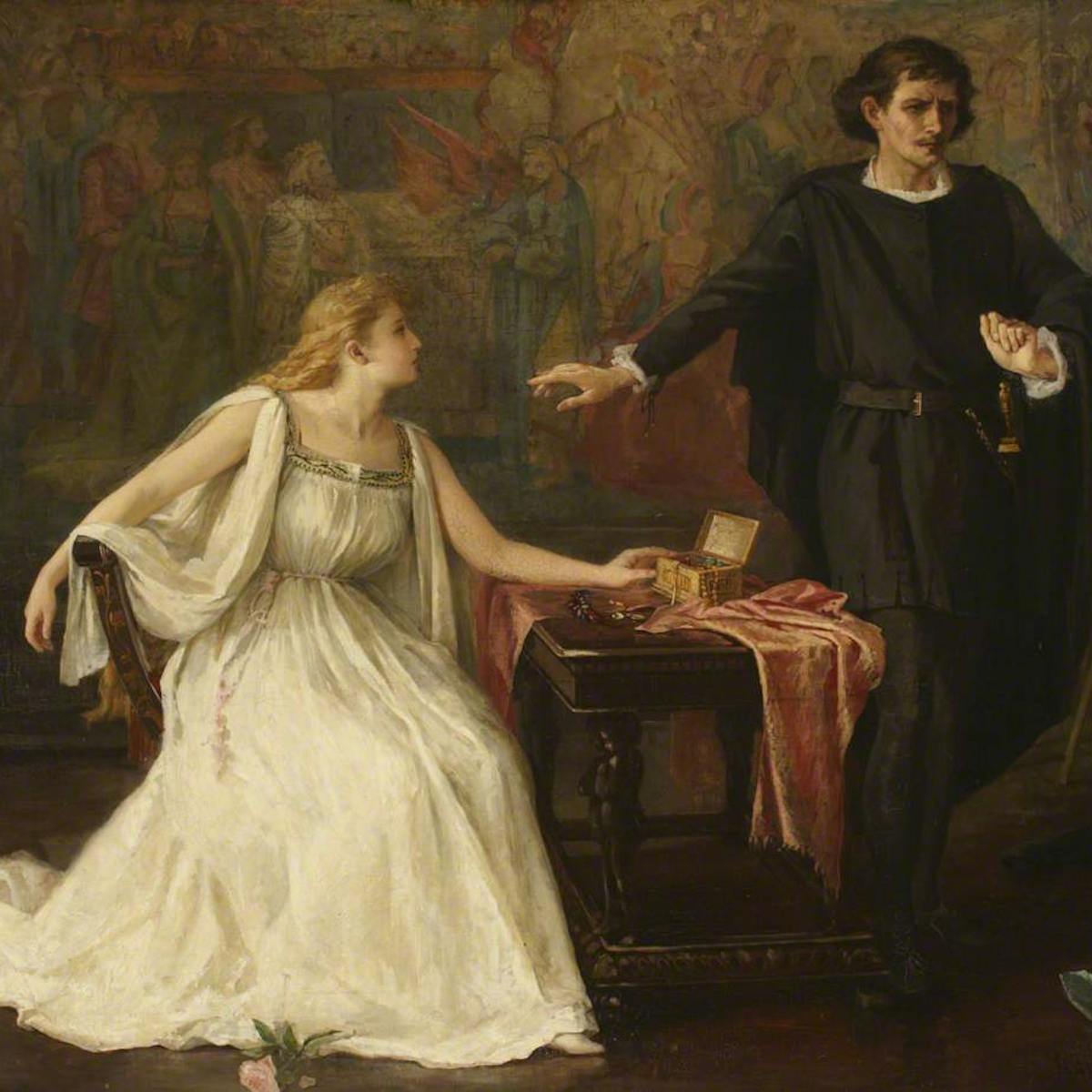William Shakespeare's Hamlet
 |
| Hamlet William Shakespeare 1603 |
In Hamlet, there were many different references to the theme: disease. Before
diving into details on a reference of disease, let's discuss "what is disease?". Disease refers to the motif of death or illness, but to a greater extent of the corrupted state of mind of a character or state. With that being said, a great example of disease could be seen through the corruption of Ophelia, Hamlet's lover/daughter of Polonius. Though Hamlet is already corrupted from seeking revenge for his father's death and accepting the quick marriage of his mother and uncle, it has also led Ophelia to be in this state of mind. After Hamlet rejected his love for Ophelia due to his own concerns, Ophelia has gone mad. " Tomorrow is Saint Valentine’s day, All in the morning betime, And I a maid at your window, To be your Valentine: Then up he rose, and donn'd his clothes And dupp'd the chamber door. Let in the maid that out a maid Never departed more." ( Act IV, Scene 5, Lines 48-55) In this particular scene, Ophelia is portrayed as a disease as she is being corrupted from the mourning loss of her father and with the addition of heartbreak from Hamlet. Rather than just her being corrupted alone, there was an acceptance of Hamlet also being a part of this disease. Shakespeare used these characters to portray this particular theme through their losses and mentality.
diving into details on a reference of disease, let's discuss "what is disease?". Disease refers to the motif of death or illness, but to a greater extent of the corrupted state of mind of a character or state. With that being said, a great example of disease could be seen through the corruption of Ophelia, Hamlet's lover/daughter of Polonius. Though Hamlet is already corrupted from seeking revenge for his father's death and accepting the quick marriage of his mother and uncle, it has also led Ophelia to be in this state of mind. After Hamlet rejected his love for Ophelia due to his own concerns, Ophelia has gone mad. " Tomorrow is Saint Valentine’s day, All in the morning betime, And I a maid at your window, To be your Valentine: Then up he rose, and donn'd his clothes And dupp'd the chamber door. Let in the maid that out a maid Never departed more." ( Act IV, Scene 5, Lines 48-55) In this particular scene, Ophelia is portrayed as a disease as she is being corrupted from the mourning loss of her father and with the addition of heartbreak from Hamlet. Rather than just her being corrupted alone, there was an acceptance of Hamlet also being a part of this disease. Shakespeare used these characters to portray this particular theme through their losses and mentality.
 |
| Hamlet and Ophelia Agnes Pringle Chiswick Town Hall |
Shakespeare uses many themes throughout the play, yet only one stood out to me. For this reason, it helped me get a better understanding of the characters and their emotions deeper. For example, " O! that this too too solid flesh would melt, Thaw and resolve itself into a dew:... Fie on 't! Ah fie! 'tis an unweeded garden, That grows to seeds; things rank and gross in nature" ( Act I, Scene 2, Lines 129-136) This was the very first sign of corruption for Hamlet as he is mourning his father's death and the dislike of the new marriage. Here, he has suicidal thoughts and negative emotions. I really enjoyed how well put these characters are and why they play such an important role in the play. It's interesting to see how some characters foil within each other and the connection between both parties of Denmark and Norway. Personally, I would have never thought about reading Hamlet, but I'm really glad that I did. Though the story may be confusing to understand through the Shakespearean language, the story was still interesting through the help of finding modern English translation and the cliff notes given. I very much believe that Hamlet should be a play that everyone should get into because there were many unexpected twists and turns.
The video shown above is from "Hamlet (1990)". I chose this particular scene because it illustrates Ophelia's madness perfectly and it is played by one of my favorite actresses, Helena Bonham-Carter.
Work Cited
“Hamlet and Ophelia.” Hamlet and Ophelia | Art UK, https://artuk.org/discover/artworks/hamlet-and-ophelia-178865.
Lamb, Sidney. " Shakespeare's Hamlet". Cliffscomplete.
Comments
Post a Comment